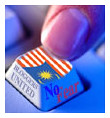Bureaucracy Turns a Kilometer Land Journey Into Hours
Bureaucracy Turns A Kilometer Land Trip Into Hours
M. Bakri Musa (www.bakrimusa.blogspot.com
Last Of Two Parts The Return Southward Journey
For the return journey I chose the train using the ticket I had bought earlier online. I arrived at JB Sentral early as I wanted to explore the shopping center. I had worked as a surgeon at the nearby hospital back in 1978 and remembered well the old railway station with its cool, green spacious surroundings. All that had disappeared, incorporated into this massive edifice that included the transportation terminal, shopping arcade, and the immigration complex.
A brief walkabout was enough; the shopping complex was nothing special. As my ticket was for the 3 PM train, I inquired at KTM’s counter whether I could exchange it for an earlier one. Not possible.
Then I saw a long line at another counter with the makeshift sign, “Tickets for 1, 2, 3, 4, 5 and 6 PM trains.” For RM 5, I could get on an earlier train. With the sign in bold letters “Have passports ready when purchasing ticket” in full view in front of me, I forwarded my passport to the clerk after she issued my ticket. She gave me a puzzled look. Finally, “Go, go, go!” as she beckoned to the next in line.
So much for the sign! It was just for show. No one obeyed it, least of all the workers. Little did I know then that was a metaphor for Malaysia. Nobody follows the signs, or rules.
At the departure lobby a huge sign declared, “Gate B–Train To Singapore.” The lobby seats however were near empty. Strange, considering the long lines at the counter earlier.
Soon I saw a line forming at the other end at Gate A, “Domestic Destinations,” so the sign said. Except that everyone had their passports out, unusual for domestic destinations. The sign notwithstanding, it was the line for Singapore. I joined the crowd. A couple with a ticket printout (with its familiar scan code) similar to what I had for my later train was refused entry. The husband had to scuttle back to the KTM counter to exchange it for a “real” ticket. I checked my now unneeded return ticket printout. It said in bold, “Present at the Gate!” but I saw no scanner.
That cleared, a long walk to immigration and another queue. Then more waiting.
At last we were let on to the platform. My ticket showed “Coach 2, Seat 14,” but the coaches were not numbered. I boarded the nearest one. Despite the earlier long lines, it was near empty, and the seats were not numbered!
On reaching Singapore and after surviving another long line under “Other Passports,” I was out into the less-long taxi queue. Finally, I thought.
Premature! The driver asked for my destination, and when I replied, he refused to take me. It was not worth his time for such a short trip. So back to the nearby bus stop, and a frantic search for exact change. Everyone else had passes.
My outward journey took over two hours; my return, about an hour. Both were not at peak times, so said the apps on my smartphone. I reviewed the map; the total distance each way, including the one kilometer causeway, was less than ten kilometers.
Imagine what a school kid, commuter, or frequent traveler between the two countries would have to endure. The power of and burden imposed by modern bureaucracies! It matters not whether the bureaucracy is competent and efficient as in Singapore, or corrupt and incompetent north of the causeway.
There has to be a better way. Considering that there were few foreign faces amongst my fellow passengers, meaning, most were frequent border crossers, there could be special permits akin to America’s Global Entry and Trusted Traveler Programs. That would eliminate the bulk of the lines. For another, sophisticated face-recognition technology could spare those bureaucrats from mindlessly and endlessly flipping through and stamping passports, at least for those regulars.
The only technology I saw was the live web camera of the causeway that would give you real-time view of the traffic and the estimated driving time in both directions. As for electronic passport reader, that is available only in Singapore for her citizens.
On reflection, there is a reason why there are no such innovations. At its core, immigration, border controls, or “Homeland Security” as we call it stateside, are but manifestations of a massive public works project. They serve no other useful purpose.
For Malaysia, the ugly reality is that the millions of now illegal immigrants entered the country legally through work permits issued corruptly to families and cronies of ministers. Those workers then overstayed. Then there are the million others who entered through the miles of unguarded coastlines and the equally porous land borders. If caught, well, that explains why even lowly immigration officials drive Lamborghinis!
There are plans to expand the immigration bays. The proposed Rapid Transit System had been cancelled. The solution however is not in more or improved facilities but in eliminating the many soft barriers.
Meanwhile Malaysia complains that her sand is being sold to Singapore, threatening the ecology. The solution there is simple. As per Friedman’s wisdom, have the government be in charge of the sand!


